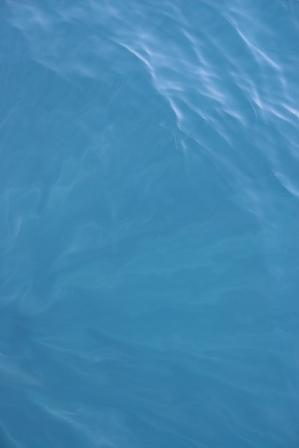
Ocean blue
In honor of the 4th of July, here’s a post on red, white and blue ocean style.
Red: In the ocean, red often serves as a warning color, as in watch out predators, if you try to eat me there will be serious trouble. The bright red coloring of the California scorpionfish alerts potential diners of the sharp, poisonous spines running along its back. A scorpionfish is called a scorpion fish for a reason, so avoid a nasty sting by staying clear of the spines. A sting won’t kill, but it can really hurt. So if you do happen to accidentally bump into a scorpionfish, quickly wash the problem area in hot water. According to Probably More Than You Want To Know About the Fishes Of The Pacific Coast by Milton Love: “The heat alters the toxin’s structure, making it harmless.”
White: On land, white isn’t a very popular color for camouflage, unless you happen to be an animal living on Antarctica or close to the North Pole. But in the ocean, white is extremely popular, especially on the underside of fishes. White bellies render fishes essentially invisible to any animals below looking up seeing the glare of the sun reflecting off the water, a lot of brightness and whiteness blending together. This of course works both ways, white bellies also make top predators such as the great white shark, very difficult to see to potential victims underneath. White on the belly is a good way to go in the ocean, whether you are predator or prey.
Blue: The color blue is the easiest of all since the ocean is blue! But why is the ocean blue? Well…there are several reasons why the ocean looks blue and one of those has to do with the way water filters sunlight. Sunlight is composed of all the colors in the rainbow and when it hits the water, the red part of the color spectrum is quickly absorbed, leaving the blue part of the color spectrum for us to see. Blue light has a shorter wavelength, allowing it to travel through water further than red, yellow or green. For a more detailed explanation describing all the physics behind ocean blue, click here. But physics aside for a second, can you imagine a red ocean? It just doesn’t seem right.
Fascinating Independence Day post! Thanks.